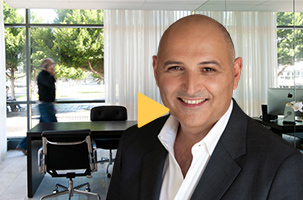Changes can occur in our bodies due to a variety of reasons including genetics, age, and lifestyle factors. These natural processes may sometimes lead to changes in the appearance and shape of specific areas like the buttocks. For some individuals, Gluteal Augmentation, including Safe Subcutaneous Buttock Augmentation (SSBA, also referred to as Brazilian Butt Lift), may be a suitable option. This procedure is aimed at adjusting the shape of your buttocks in line with your personal expectations and in accordance with medical recommendations.
Our Sydney clinic, led by specialist Plastic Surgeon, Dr. Tim Papadopoulos, offers Buttock Augmentation procedures. These are suitable for both men and women who are at a healthy, stable weight, and the procedure may assist in adjusting the shape and size of the buttocks.
Deciding to undergo Buttock Augmentation is a personal decision and should not be seen as a societal expectation or a norm. It’s one of many ways individuals choose to manage changes in their bodies, and it’s important to consider all available options, including changes in lifestyle habits, your mindset about your body, as well as non-surgical options to manage these changes.
Our team is dedicated to offering a professional, respectful, and patient-focused approach to help you make an informed decision that aligns with your personal expectations and overall wellbeing.
Buttock Augmentation, including Safe Subcutaneous Buttock Augmentation (SSBA or Brazilian Butt Lift), is a procedure focused on adjusting the shape and size of the buttocks.
The procedure can be performed under general anaesthesia and often involves the use of autologous fat transfer or dermal fillers.
The method of augmentation will depend on the patient’s individual needs and their personal expectations, in consultation with medical recommendations.
Buttock Augmentation is suitable for individuals who are at a stable weight and wish to adjust the shape or size of their buttocks.
The surgery duration can vary based on the specific method of augmentation used.
Please note that these facts are general in nature, and specific details may vary based on individual circumstances. We encourage patients to have a detailed consultation with Dr. Tim to fully understand the procedure.
Risks of Gluteal Augmentation (Buttock Lift)
As with any surgical procedure, Gluteal augmentation (buttock lift) involves some inherent risks. Dr. Tim always takes the utmost precautions to minimise these risks. However, it’s important to be aware of them before making an informed decision.
Anesthesia Risks: As the procedure is performed under general anesthesia, there are associated risks such as allergic reactions or breathing difficulties. An experienced anesthesiologist will be present throughout the surgery to manage this risk.
Bleeding: There is a risk of bleeding during or after the procedure. If you notice excessive bleeding or swelling, you should contact Dr. Tim’s office immediately.
Infection: While rare, infection can occur after a Gluteal augmentation (buttock lift). Any signs of infection, such as high fever, pus, or redness at the surgical site, should be reported immediately.
Scarring: Incisions made during a Gluteal augmentation (buttock lift) will result in some scarring. However, Dr. Tim will make every effort to place the incisions in discreet locations to minimise visible scarring.
Changes in Skin Sensation: After the procedure, some patients may experience changes in the skin sensation in the treated area. These changes are usually temporary and improve over time.
Asymmetry: Although Dr. Tim takes every surgery seriously and aims for symmetry, there can be slight differences in the shape and size of the buttocks after surgery. These differences are usually minor and not noticeable.
Fat Necrosis: In procedures involving fat grafting, there’s a risk that some fat cells might not survive, leading to hard lumps known as fat necrosis. This is usually addressed in follow-up treatments if necessary.
Deep Vein Thrombosis (DVT): Although rare, there is a risk of deep vein thrombosis or pulmonary embolism after a Gluteal augmentation (buttock lift). To minimise this risk, patients are encouraged to move around as soon as possible after surgery.
Remember, this is not an exhaustive list, and there may be other potential risks associated with Gluteal augmentation (buttock lift). Dr. Tim will discuss these in more detail during your consultation. It’s important to ask any questions you may have and to understand the risks involved before making a decision.
Recovery from Gluteal Augmentation (Buttock Lift)
The recovery process after a Gluteal augmentation (buttock lift) varies between individuals and is dependent on the extent of the procedure and individual health factors. It is crucial to follow all the postoperative instructions provided by Dr. Tim to facilitate a smooth and safe recovery.
Post-surgery
Immediately after your Gluteal augmentation (buttock lift), your buttocks will be wrapped in a surgical dressing, and a compression garment will be applied. The compression garment will help reduce swelling and support the new contours of your buttocks. You may also have temporary drains placed to help remove excess fluid.
First 48 Hours
During the initial 48 hours post-surgery, you may experience discomfort and swelling in the treated area. Prescription pain medication can be used to manage any discomfort. It is crucial to refrain from sitting directly on your buttocks and sleeping on your back during this time.
First Week
After the first week, you will return to Dr. Tim’s clinic for a follow-up appointment. During this appointment, Dr. Tim will examine the surgical site and ensure your recovery is progressing as expected. He may also adjust your pain medication if necessary.
First Month
By the end of the first month, you may be cleared to resume light activities. However, you should continue to avoid sitting directly on your buttocks for prolonged periods. The use of a specially designed cushion can allow you to sit without putting pressure on the treated area.
Six Weeks
Most patients can return to their regular activities, including exercise, six weeks after a Gluteal augmentation (buttock lift). It’s important to get Dr. Tim’s approval before you return to your regular workout routine.
Three to Six Months
By this time, the swelling should have significantly subsided, and you will start to see the final results of your Gluteal augmentation (buttock lift). The incision scars will begin to fade but may not completely disappear.
Remember, each patient’s recovery timeline will vary, and Dr. Tim will provide guidance tailored to your individual needs. Following the prescribed aftercare instructions, and attending all follow-up appointments are crucial factors in ensuring a successful recovery.
As always, if you experience any complications, such as excessive pain, redness, pus, or high fever, you should contact Dr. Tim’s office immediately.












